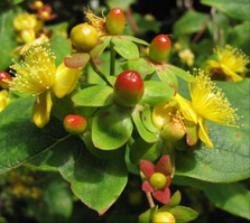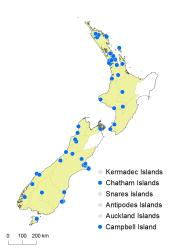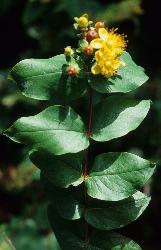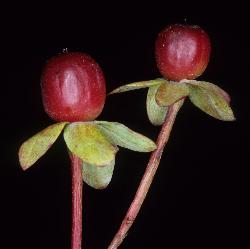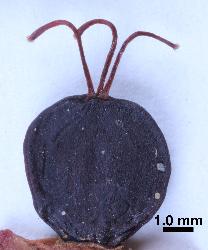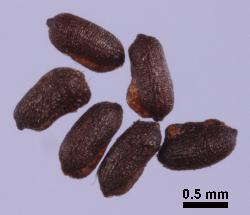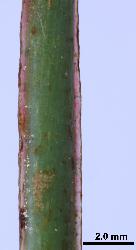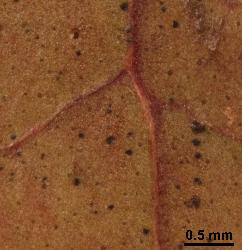- Taxon
- Weed
- Gallery
Shrub, not rhizomatous, up to 1.5 m high. Stems spreading, terete, 2-lined, black glands absent or rarely present and sparse. Leaves 35.0–100.0 mm long, 20.0–67.0 mm wide, ovate, broadly ovate, ovate-oblong or elliptic-ovate, glabrous, reticulate tertiary veins absent; pellucid glands inconspicuous; black glands usually absent or present but sparse; apex acute, subacute, obtuse or rounded, mucro less than 0.1 mm long; margin entire; base cordate or truncate; sessile. Inflorescence terminal, in cymes, flowers 2–9, corolla 15.0–25.0 mm diam. Pedicels 10.0–30.0 mm long. Bracteoles 0.4–0.7 mm long, 0.3–0.4 mm wide, triangular or triangular-ovate, apex obtuse. Sepals 5, 7.0–12.0 mm long, 3.5–7.5 mm wide, unequal, accrescent, reflexed when mature, ovate, broadly ovate, elliptic-ovate or elliptic-oblong; pellucid glands present; black glands absent or present but sparse; apex subacute, obtuse or rounded; margin entire. Petals 8.0–10.0 mm long, 5.0–5.5 mm wide, more or less equals sepals, ovate, elliptic, ovate-elliptic or obovate, pale yellow, black glands absent, caducous after anthesis. Stamens in 5 bundles, 77–110, 6.5–11.0 mm long, equal or greater than petals; anthers 0.5–0.8 mm long, anther gland orange-brown. Ovary c. 4.5 mm long, 3.5–4.0 mm wide, broad ovoid. Styles 3, 2.5–4.0 mm long, shorter than ovary. Fruit baccate, 8.5–12.0 mm long, 8.0–12.0 mm wide, globose, red, becoming black, indehiscent. Seeds 0.9–1.2 mm long, 0.4–0.5 mm wide, oblong, terete but asymmetric with protruding gland, red-brown to brown, apices obtuse or rounded.
A shrub or subshrub with terete and 2-lined stems, the leaves often with reddish blotches, small (8.0–10.0 mm long) petals that are equal to or slightly longer than the sepals, 3 styles (2.5–4.0 mm long) that are half the length of the ovary, and the fruit being indehiscent, fleshy and black. The leaves usually lack black glands, but very rarely some plants have small groups of black glands scattered over the abaxial surface. This species and H. ×inodorum are the only naturalised species with fleshy fruit. H. ×inodorum is distinguished by petals 1.5–2.0 times length of sepals, styles much longer (12.0–12.5 mm long) than the ovary, fruit bright red, and outer sepals broadly ovate.
North Island: Northland, Auckland, Taranaki, Volcanic Plateau, Southern North Island.
South Island: Western Nelson, Sounds Nelson, Westland, Canterbury, Otago, Southland, Fiordland.
Chatham Islands, Stewart Island, Campbell Island.
A common weed in higher rainfall areas where it occurs in open forest, forest margins, scrub and other secondary growth, waste places and garden surrounds.
Kirk (1870, p. 136). Voucher: WELT SPO87622, 1868.
Flowering: Nov.–Feb.



